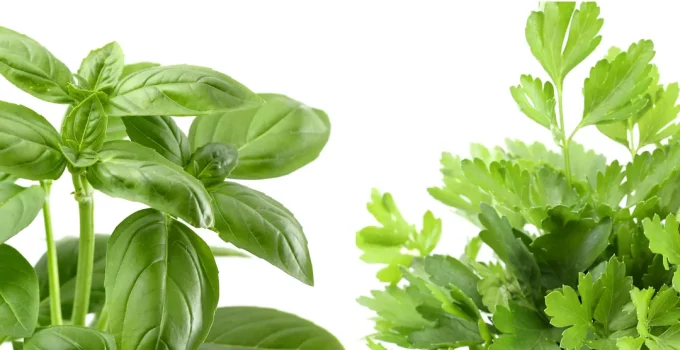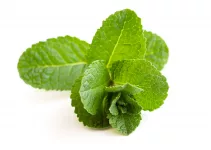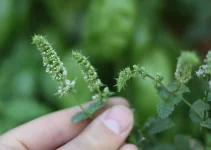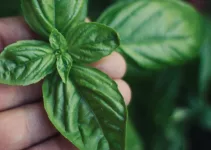When it comes to comparing parsley vs basil, we’re actually talking about two of the most used, most fragrant, most beloved herbs across the globe. It will be an absolute delight to talk about them in this debate.
I’ve written a number of articles on basil but you should start with how to grow basil from seed or with how to grow basil hydroponically. On parsley, I’ve only managed to cover how to grow parsley hydroponically. After all, hydroponics is a true passion of mine.
However, with the occasion of this parsley vs basil debate, I’ll be able to cover much more.
No matter what culture we were born into or live in at the moment, these two herbs can make an appearance in a number of dishes. We are all thrilled when we see the green wonders of these two delicious herbs.
For example, I can’t think of eating a salad without adding a hand of roughly chopped parsley. Just as I can’t think of using some fresh tomatoes to make a simple, quick pasta dish without covering it in a mound of basil leaves.
Table of Contents
Parsley vs Basil: the Common Features
Besides being herbs and their immense popularity, there is another major thing they have in common: these two belong to the same family.
We’re talking about the Lamiaceae family (mint family), which comprises 236 genera and more than 7000 species.
However, parsley is more than a herb, it’s also a vegetable and we’ll talk about that in a moment.
If you want to know more about the other herbs belonging to the same family, check out my article on easy herbs to grow in hydroponics. The alternative is to grow them in containers indoors or in the garden. All methods are pretty easy when it comes to growing all kinds of herbs.
All in all, this is pretty much where the common features end.
In our parsley vs basil debate we’ll spend our time covering all the ways in which these two plants differ. But those differences make them all the more wonderful and more worthy to talk about.
If there is a herb that parsley has more in common with, that would be cilantro, which is also called Chinese parsley. Unfortunately, some people are destined to think that cilantro tastes like soap. Fortunately, they’ll still be able to taste parsley properly.
Parsley vs Basil: Taste
When you taste either of them, you really can’t say that they have something in common when it comes to flavor.
Besides their appearance and the shape of their leaves, the taste is the most important feature that really sets these two apart. You can’t substitute parsley for basil and vice-versa.
Sweet basil has a savory clove fragrance, reminiscent of aniseed (anise). It tastes like a sweet, powerful kick to our taste buds.
Thai basil is able to combine the aroma of anise and licorice in a sweet package.
If you want a citrus-flavored variety, you can grow lemon basil. Or just grow lemon balm, a completely different herb that has a stronger citrusy flavor.
Parsley has a very intense flavor, a grassy flavor but in a delicious way, a taste that sticks to you and makes you love it. For some, it can also be a bit bitter and almost spicy. I said that it can be a bit bitter for some but to me it actually tastes sweet and earthy and spicy.
Parsley: More Than a Garnish
When we think of herbs, we tend to think of them as garnishes. That’s especially true when it comes to parsley.
On the other hand, basil is seen as a proper ingredient that adds complexity to dishes. That’s another difference to be mentioned in our parsley vs basil debate.
I absolutely think that parsley is more than a garnish. It’s in fact an ingredient that freshens a simple dish, adds more flavor to a simple lettuce/tomato salad or adds more complexity to the overall flavor of a dish.
It’s more than a green thing to sprinkle over a dinner or a decoration to a serving plate.
If you want to convince yourself of what I’m saying, I recommend first making a parsley salad or making a chimichurri with parsley and oregano or use it for making pesto or a gremolata.
If you want even more recipes to experiment with, I recommend tabbouleh, herb frittata, a whole array of soups, pasta, grain dishes, souvlaki.
As I’ve said, parsley is more than a garnish.
Parsley Is a Vegetable
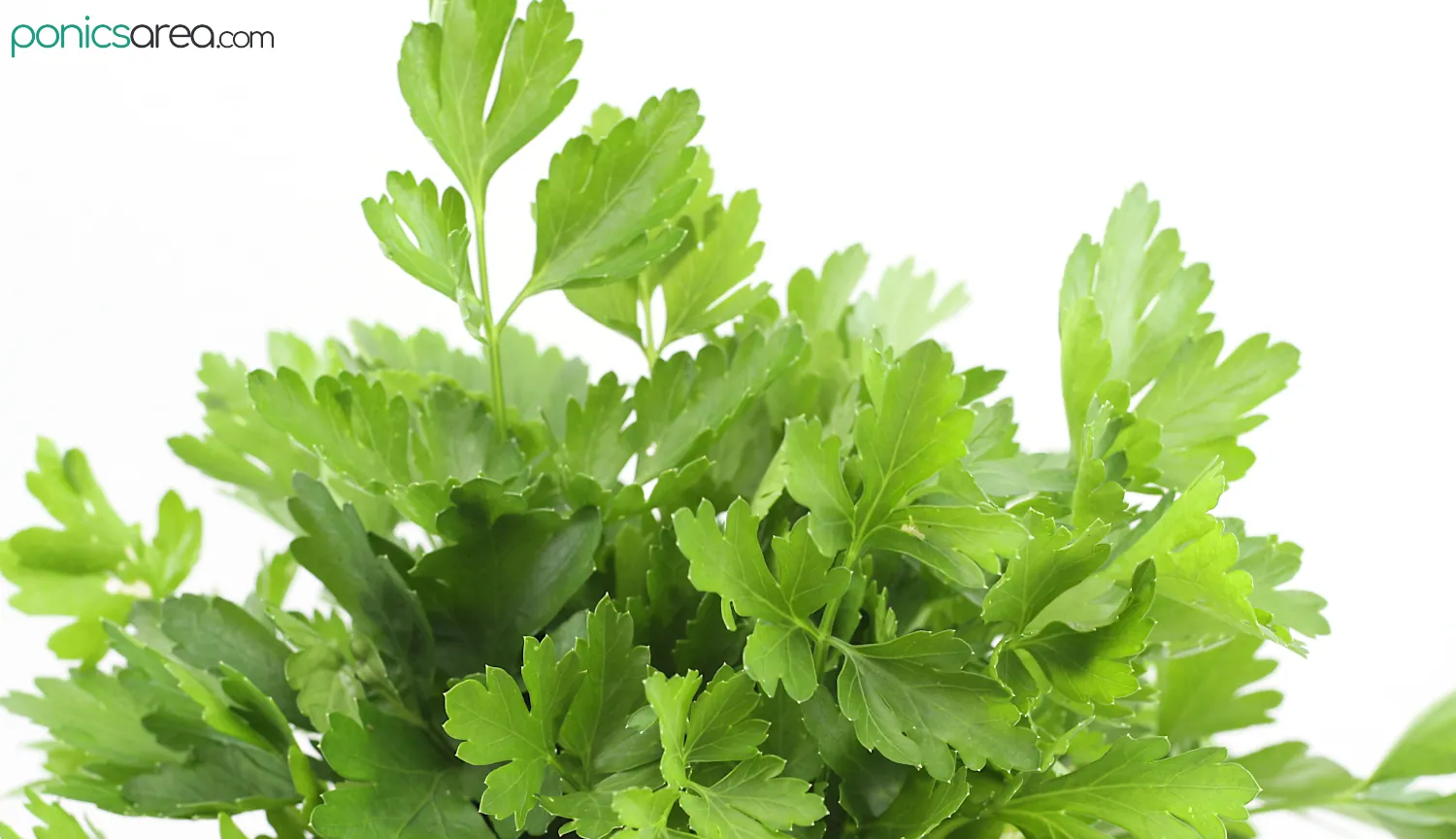
To further demonstrate that parsley is more than a garnish, we have this truth: parsley is a vegetable. This is another major difference that we must talk about in our parsley vs basil debate.
We think of it as a herb and it is indeed one. Even so, we should be aware that we can also consume the roots of the plant. Thus, it’s also a root vegetable, just like carrot is.
Parsley roots are a delicious addition to roasted vegetables or to soups. That’s pretty much how I cook them.
In order to grow parsley roots in the garden, you actually need to grow a certain variety.
Root parsley is often called Hamburg or turnip-rooted parsley. The Fakir variety is very popular among growers due to high yields and smooth, well-filled roots. You can also consume the leaves.
If you’re only growing it as a herb for its leaves, you can choose from these varieties:
- curly parsley – Triple Curl, Green River
- French/Italian flat-leaf parsley – the tastiest and most popular variety
- Japanese parsley (mitsuba)
Basil: Versatile Herb
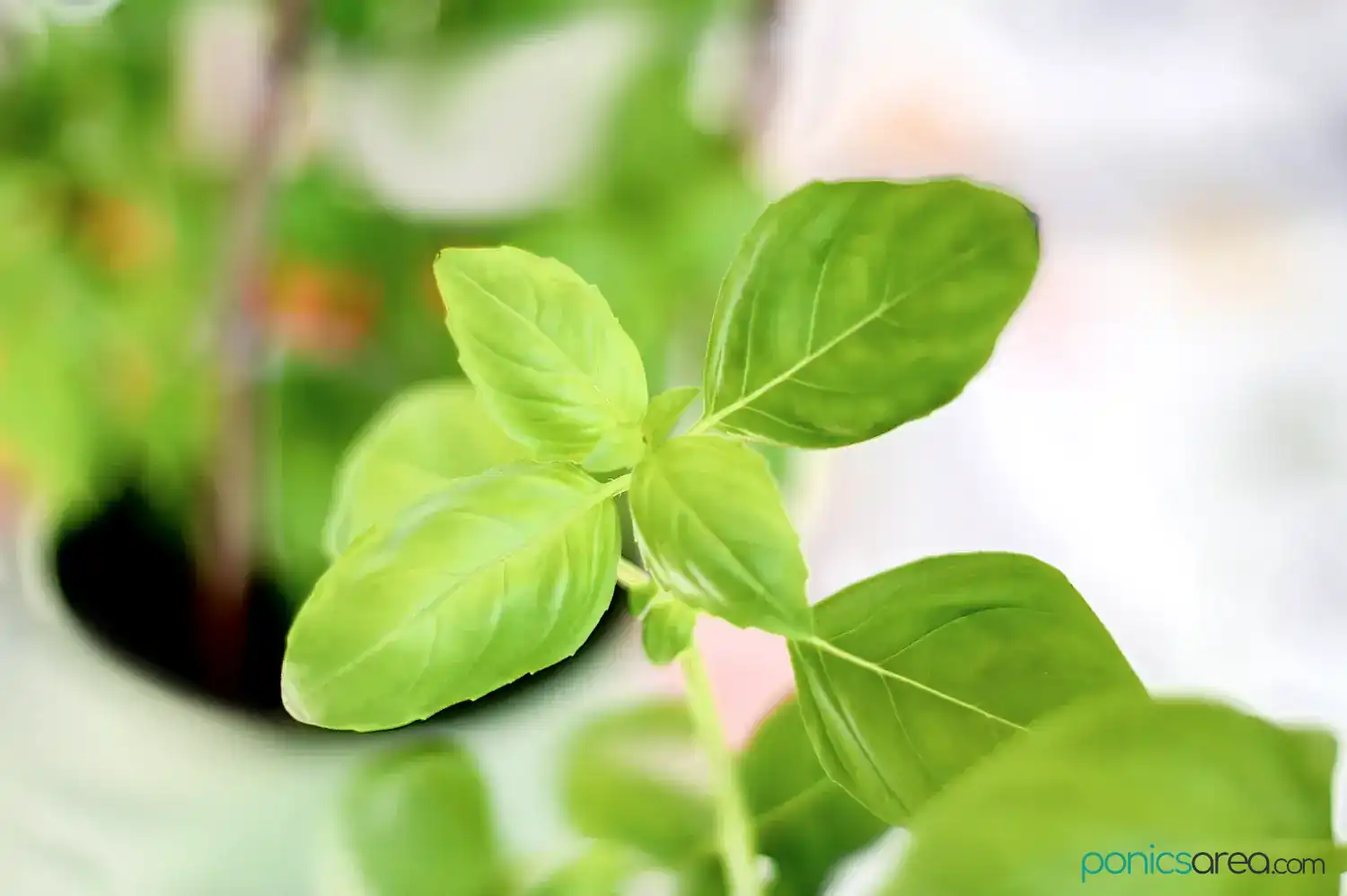
I call basil a versatile herb because it’s used in many kitchens around the world. The two most important that always come to mind are Italian and Thai
Europeans and Asians appreciate a pot of basil at any given time. It’s no wonder that I prefer cooking dishes from these cultures the most.
Moreover, it can also be used in sweet dishes. That’s something that definitely doesn’t work for parsley.
Basil and strawberries is an already famous combination. But it also works well with many other fruits like watermelon, mango, lemon, lime, oranges, and other berries.
Basil is unmistakable, from its appearance to its fragrant smell to its taste that can elevate a dish by just the sprinkle of a few shredded leaves.
Of course, the same can be said about rosemary and thyme and oregano and, let’s not forget, the powerful mint leaves in both fragrance and aroma. It’s just that basil holds a special place in my heart and for my taste buds.
If someone were to ask me: in a parsley vs basil debate, which was your favorite, which herb would you pick over the other? I would say in a heartbeat basil.
Luckily, I don’t have to choose. I choose to grow both of them, whether in containers indoors, in hydroponic systems or outdoors in the garden.
Basil Varieties
Another thing that confers basil such versatility is the many varieties that we can grow.
Obviously, sweet basil (Genovese, Italian Large Leaf, common basil) is the most popular variety and the most frequently grown around the globe.
Even so, there are other varieties that we can experiment with, whether for cooking or just for ornamental purposes: Thai basil, lemon basil, purple basil are the next three varieties you should experiment with.
The purple variety is just an ornamental herb, not exactly used for cooking, but it’s gorgeous.
Parsley vs Basil: Which Is Easier to Grow?
They’re both quite easy to grow indoors in containers or outdoors in the garden. I will just focus on the indoors side of things because most of us prefer growing them indoors so that we can have fresh leaves even in the winter.
How to Grow Parsley Indoors
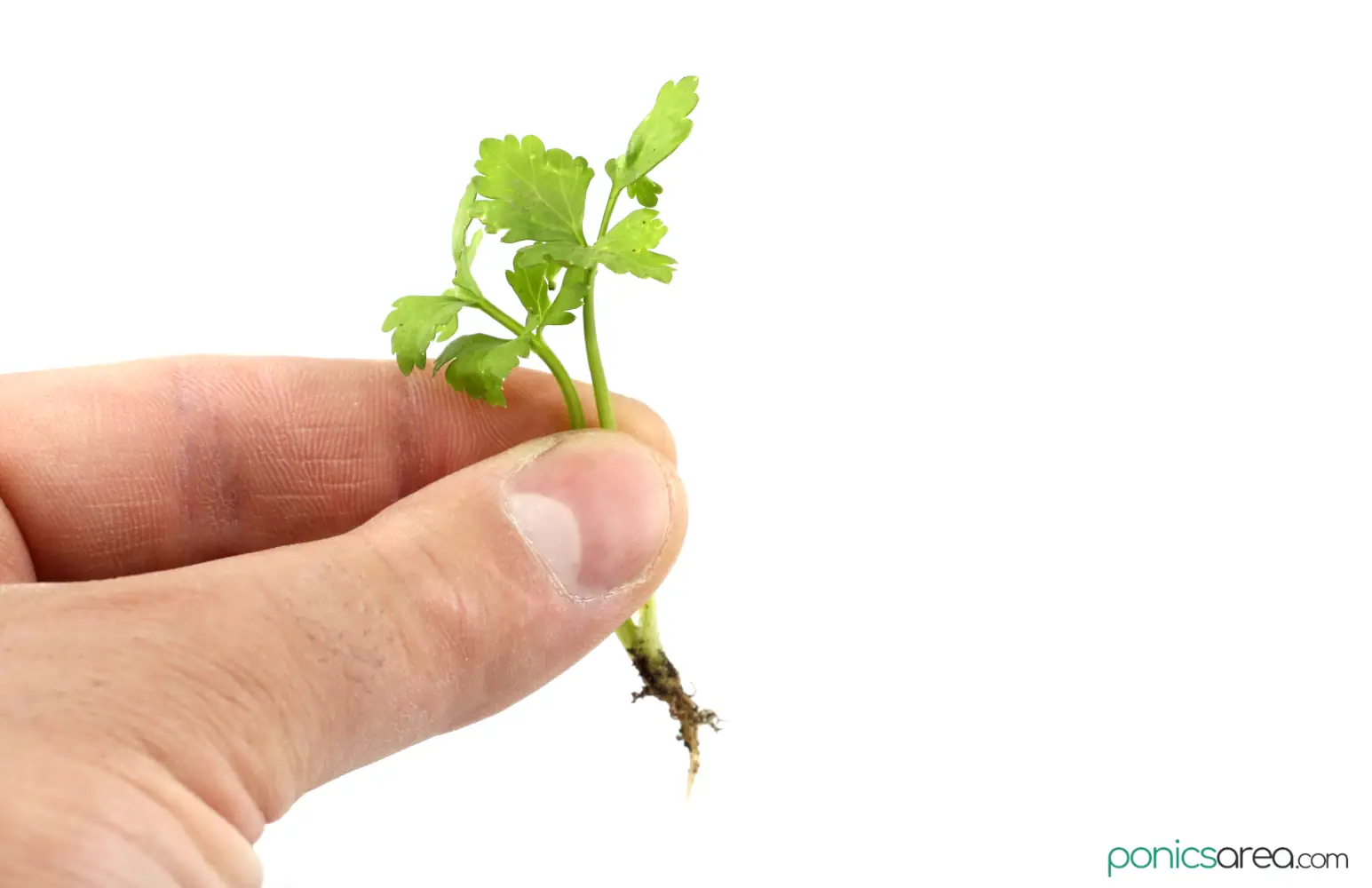
Let’s quickly learn how to grow parsley indoors. I hope this debate on parsley vs basil inspires you to want to grow many herbs indoors or outdoors.
Varieties
- French/Italian flat-leaf parsley are the two most popular varieties because they have the best flavor
- curly parsley doesn’t have the same intense flavor and it can require more attention for a successful growth
- if you want something different, you can experiment with the Japanese (mitsuba) variety
- Fakir variety is the best option if you want to grow this vegetable for its roots
Choose a pot
I recommend going for an 8-inch pot if you want to grow just one plant. It should have at least 1 drainage hole.
If you want a bigger crop, grow in a 12-inch pot. You’ll be able to grow 3 plants in the same container.
If you don’t want to spend the money, just grab a plastic box, as long as it has a decent size and depth.
Soil
It prefers a potting mix that’s rich in organic matter. Look for soils that mention compost, composted manure.
Organic potting mix is another wonderful option. If you want a complete guide on the best soil for parsley, you can check out this video.
You can place the pot in full or part sun. It should get at least 4 to 6 hours of sunlight daily.
If you’re growing in winter, you will most likely need grow lights if you live in a place with short days.
How to germinate parsley seeds
The complicated thing about growing parsley indoors is seed germination. In this case, seed germination can take quite a long time.
That’s why it’s best to soak the seeds in tepid water for at least 24 hours. You can let them soak for as much as 3 days. That will speed up germination and increase your success rates.
After 1-3 days have passed since soaking the seeds, rinse them once and now you’re ready for sowing.
You could also try to germinate them on paper towels for a couple of days and skip on soaking. Both methods are good.
Grab your container/pot and sow the seeds, you can sow them 1-2 inches apart. Cover them lightly with soil and water it.
It takes 3 to 8 weeks until seedlings appear. It’s quite the lengthy process. For basil is definitely not the same, that one is much faster.
Once you have your seedlings, you can thin them out.
Watering schedule
Another thing to remember is that parsley will bolt if you don’t water it regularly. If you get flowers, you can delay bolting by cutting the emerging flowering stalks.
You should never allow the soil to dry out completely.
Always water until water drips from drainage holes. Then water again when the top 2 inches of soil are dry.
Depending on how much sun your plant receives, you’ll have to water it at least once a day. Twice daily if it’s too hot. Just make sure that the soil is always moist.
How to Grow Basil Indoors
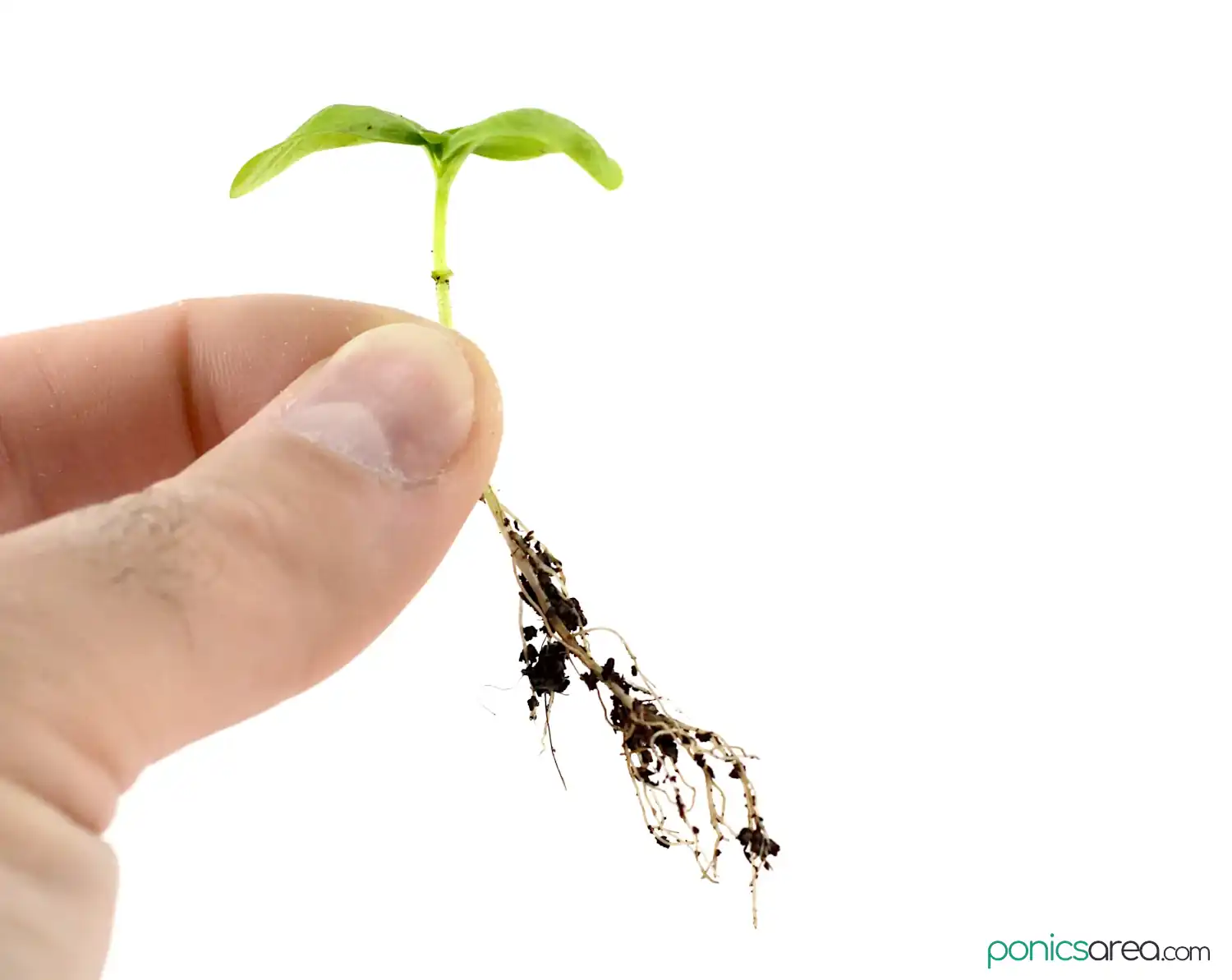
I must mention in this parsley vs basil debate that I think that basil plants are much easier to grow.
You’ll get faster germination, a not-so-frequent watering schedule, and the possibility of growing more leaves that you know what to do with if you prune it frequently.
Choosing the best pot & soil
You can start with an 8-inch pot with at least a couple of drainage holes if you don’t have space for something bigger.
An 6-inch pot also works for your first attempt if you don’t have a bigger one around. Or just use old plastic containers that are big enough.
Choose a nutrient-rich, slightly acidic, well drained potting mix. Or just go for potting soil with lots of compost.
You’ll have to place the pot in a place that receives at least 6-8 hours of sunlight daily. If that’s not possible, buy a grow light. Even a cheap GE BR30 bulb is more than enough.
How to germinate basil seeds
The most popular variety is sweet basil. Thai basil is another variety used for cooking and so is lemon basil for its citrusy undertone.
I would recommend getting fusarium tested seeds.
Germinating basil seeds is very easy. They will germinate in 7 to 10 days.
Grab your chosen pot/container filled with soil and just plant the seeds 1/4 inches deep. Water the soil immediately after.
If you’ve planted too many seeds in the container, you can space them out when they’ve grown into seedlings that have 2 sets of true leaves. The plants should end up being 6-8 inches apart.
Keep the soil moist throughout germination. You can use a plant mister/sprayer for that.
Once the seedlings are strong enough, you’ll only have to water about once a week, if the temperature isn’t too hot. The easiest way to tell is by sticking a finger in the soil: it should be cool and moist all the time.
Or buy a live basil plant
If you want to skip all these steps, buy a live basil plant, even one from a supermarket, and transplant it into a bigger pot, filled with a rich soil, and that’s about it.
When it grows 6 inches tall, it’s time to prune it. You can check out my guide on how to prune basil plants.
Even if you don’t end up growing these herbs at home, I hope that this parsley vs basil in-depth comparison has inspired you to cook more dishes, to experiment with different combinations, maybe even with parsley root as a vegetable, and to generally appreciate herbs more.

